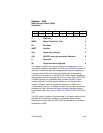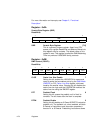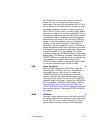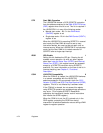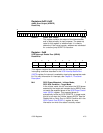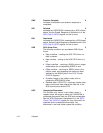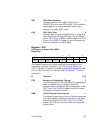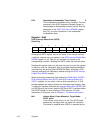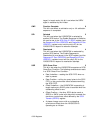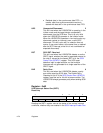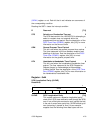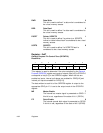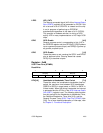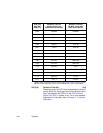SCSI Registers 4-77
target. In target mode, this bit is set when the SATN/
signal is asserted by the initiator.
CMP Function Complete 6
This bit is set when an arbitration only or full arbitration
sequence is completed.
SEL Selected 5
This bit is set when the LSI53C875A is selected by
another SCSI device. The Enable Response to Selection
bit must be set in the SCSI Chip ID (SCID) register (and
the Response ID Zero (RESPID0) and Response ID One
(RESPID1) register must hold the chip’s ID) for the
LSI53C875A to respond to selection attempts.
RSL Reselected 4
This bit is set when the LSI53C875A is reselected by
another SCSI device. The Enable Response to
Reselection bit must be set in the SCID register (and the
Response ID Zero (RESPID0) and Response ID One
(RESPID1) registers must hold the chip’s ID) for the
LSI53C875A to respond to reselection attempts.
SGE SCSI Gross Error 3
This bit is set when the LSI53C875A encounters a SCSI
Gross Error Condition. The following conditions can result
in a SCSI Gross Error Condition:
• Data Underflow – reading the SCSI FIFO when no
data is present.
• Data Overflow – writing too many bytes to the SCSI
FIFO, or the synchronous offset causes overwriting
the SCSI FIFO.
• Offset Underflow – the LSI53C875A is operating in
target mode and a SACK/ pulse is received when the
outstanding offset is zero.
• Offset Overflow – the other SCSI device sends a
SREQ/ or SACK/ pulse with data which exceeds the
maximum synchronous offset defined by the SCSI
Transfer (SXFER) register.
• A phase change occurs with an outstanding
synchronous offset when the LSI53C875A is
operating as an initiator.



